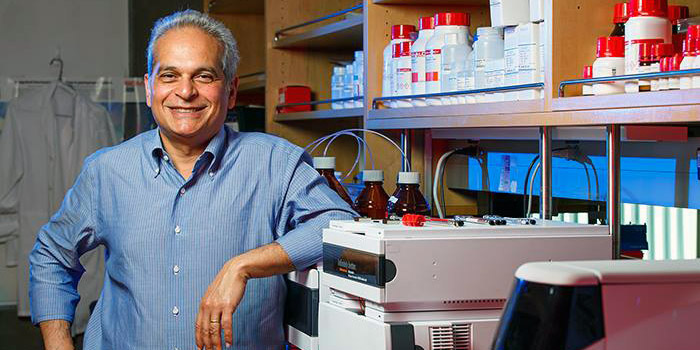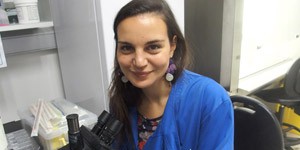By Guillermo Moreno-Sanz

Dr. Moreno-Sanz has authored more than 30 scientific articles and 3 patents describing the role of the endocannabinoid system in pain perception. Graduated in Biochemistry and Organic Chemistry from the University of Zaragoza, he obtained his PhD in Neuroscience from the Complutense University of Madrid, in Spain. He gained extensive international experience with long-term fellowships in the Netherlands, Italy, and the United States, developing most of his academic career at the University of California, Irvine, where he discovered a new class of cannabinoid analgesic with high clinical potential. In 2017, he acted as a consultant to the National Academies of Sciences of the United States in the preparation of the report "The health effects of cannabis and cannabinoids" and later founded Abagune Research to offer scientific advice and R&D solutions to the international cannabis industry. In 2020 he assumes the scientific and medical direction of Khiron Life Sciences in Europe.
Meet the Experts is a series of interviews conducted by experts from the field of Cannabis to world leaders in research and clinical practice of Cannabis as medicine.
Daniele Piomelli is Professor of Anatomy and Neurobiology, Pharmacology and Biological Chemistry and Louise Turner Arnold Chair in Neurosciences at the University of California, Irvine (UCI). In addition, he is the director of the UCI Institute for the Study of Cannabis, a multidisciplinary research institute led by the UCI's Schools of Medicine and Law.

Daniele studied pharmacology and neuroscience with James H. Schwartz and Eric Kandel at Columbia University (1983-1988), and with Paul Greengard at the Rockefeller University (1988-1990). In 2000, both his mentors received the Nobel Prize for their contributions to physiology and medicine.
Then he worked at the INSERM in Paris (France) and at the Neurosciences Institute in San Diego, with Nobel Laureate Gerald Edelman, Daniele is an author of more than 400 peer-reviewed articles in journals such as Nature, Science, Nature Medicine, PNAS and Nature Neuroscience, three full-length books, and 34 patents. He co-founded the unit of drug discovery and development (D3) at the Italian Institute of Technology in Genoa (Italy) which he directed from 2007 to 2016, and the biopharmaceutical start-ups Kadmus Pharmaceuticals, NeoKera Therapeutics and Aspire Biosciences, all based on discoveries made in his lab. He is Editor-in-Chief of Cannabis and Cannabinoid Research, the only peer-reviewed journal entirely dedicated to the study of cannabis, its derivatives, and their endogenous counterparts in the human body.
We had the opportunity to talk with Daniele at the 9th IACM Conference on Cannabinoids in Medicine celebrated last October in Cologne, where he received the 2017 Ester Fride Award for Basic Research.
Guillermo Moreno-Sanz: Daniele, congratulations on your award and welcome to the series of interviews with medical cannabis experts of Fundación Canna. You are a pioneer of the pharmacology of the endocannabinoid system. Can you tell us how did you first got involved with this field?
Daniele Piomelli: It's a question that requires some background! I have been interested in brain lipids since my days as an undergrad student in Italy. Back then – we are talking of the mid 1980s – lipids were still viewed only as structural components of cells, not as signaling molecules. One exceptions were the metabolites of the fatty acid, arachidonic acid, which had just been implicated in inflammation. Nobody seemed to care about the functions of these molecules in the brain, however, and that really excited my curiosity. When I started my PhD at Columbia University, I was lucky that two of my mentors, Jimmy Schwartz and Eric Kandel, shared my interest and let me work on the role of arachidonic acid in neuronal signaling. During my PhD, and later in a post doc with Paul Greengard at the Rockefeller University, I found that this molecule can act as a intracellular signal in neurons. Our work showed that arachidonic acid is transformed in second messenger molecules that regulate neuronal cell function by modulating ion channels and protein kinases.
GMS: How do you remember those early days at the dawn of such an important discovery?
DP: When I was working with Greengard, Allyn Howlett and Lisa Matsuda discovered the first cannabinoid receptor, which we now call CB1. I was fascinated by its distribution in the brain and the subtlety of the psychological effects of THC, and wondered what could be its endogenous agonist. Still, I did not tackle this question because I was convinced, like everyone else, that an endogenous cannabinoid agonist would be a peptide or some other hydrophilic molecule, not a lipid. Much to my surprise and delight, in 1992, Bill Devane and Raphi Mechoulam isolated from pig brain an arachidonic acid derivative that was an agonist for cannabinoid receptors. By then I had my own tiny lab, and told my only student and postdoc that, from that time on, we would work on anandamide — as Bill and Raphi had called the new arachidonic acid derivative they had discovered.
GMS: From that moment you started a very prolific career as a basic researcher. Which of your scientific accomplishment makes you feel more satisfied?
DP: The years after the discovery of anandamide were amazing. Between 1994 and 1999 we delineated the molecular mechanisms underlying anandamide formation and deactivation (1994-1997) and demonstrated, by using in vivo micro dialysis, that anandamide is a bona fide neurotransmitter. It may not seem like it now but this was a very controversial issue in 1999!. In the period 1997-2001, we also described the molecular mechanisms involved in the formation deactivation of the second endocannabinoid, 2-AG, which also derives from arachidonic acid, and showed that this compound is also a neurotransmitter.
GMS: Besides characterizing these molecular mechanisms, you have dedicated much of your work to create pharmacological tools that target the deactivation of endocannabinoids.
DP: Being a pharmacologist, I thought that this would be important not only to understand how endocannabinoids work, but also as a means to open up the endocannabinoid system to drug discovery. The natural follow up to this work was to identify molecular probes that could be used to investigate endocannabinoid function. So, in 1997, we identified the first inhibitor of transmembrane anandamide transport. In 2002, we published the first useful inhibitor of fatty-acid amide hydrolase (FAAH), the enzyme responsible for the deactivation of anandamide. I say useful because Dale Boger published one before us, but his molecule did not work in vivo. And then, in 2005, the first inhibitor of mono acylglicerol lipase (MGL), the enzyme that degrades 2-AG. Using these probes, we and others demonstrated that anandamide and 2-AG play important roles in the control of pain, mood, the response to stress, and energy balance.
GMS: FAAH inhibitors held great promise for clinical development earlier this decade. However, the negative outcome of the Pfizer trial for osteoarthritic pain in 2012, and then the fatality occurred during the Bial trial in 2016, where a healthy volunteer died and five other had to be admitted to ER, have severely harmed the target. Do you believe FAAH inhibitors will still find clinical application?
DP: I am confident that, in time, FAAH inhibitors and other endocannabinoid-based drugs will find their way to the clinic. The Bial trial really hurt the field, but is now a bad memory: everybody (including the FDA and EMA) agree that the Bial compound was poorly developed and even more poorly tested in the clinics. Its toxicity was clearly not due to FAAH inhibition and could have been avoided with a more sensible clinical approach.
GMS: After many years of pharmaceutical development, phytocannabinoids still remain the tools we have to target the endocannabinoid system clinically. Do you think the therapeutic potential of cannabis and cannabinoids is overly magnified?
DP: Cannabis can be useful in certain conditions, but will never be an 'easy drug'. There is only so much one can do to broaden its therapeutic index, which is quite narrow. That's why I think that the future is in the discovery of endocannabinoid-based medicines. While we wait for those, however, we should deepen our understanding of cannabis and leverage this new knowledge to address important unmet medical needs, such as pain and opiate abuse.
GMS: You are the Editor-in-Chief of Cannabis and Cannabinoid research, the only peer-reviewed journal entirely dedicated to the study of cannabis, which publishes in colaboration with international associations such as ICRS and IACM, and was recently indexed in Pubmed.
DP: Well, I think I knocked first, and now I am pretty much stuck with it! But the field is still very young, and there are a lot of cool things to do. One of them is bridging the gap between the bench and the clinic, and CCR is trying to do just that. We are having some success, but we still have a lot of work to do. Hopefully, more and more colleagues will take advantage of this opportunity to reach a broad audience of folks interested in cannabis and the cannabinoids. And, surely, our friends at ICRS and IACM will play an important role in this!
GMS: You also testified in front of the US Senate last year and participated in the panel of experts that the National Academies of Sciences put together to elaborate their report on cannabis research. How does Federal legislation affect your research?
DP: The gap between Federal and State legislations in the US could not be more profound, and is a serious obstacle to both preclinical and clinical research. UCI schools of Medicine and Law have joined forces to create a multidisciplinary institute (the Institute for the Study of Cannabis, ISC) with the objective of finding ways of filling this gap. Hopefully, in the next few years we will make progress on this issue!
GMS: We wish you the best of lucks on this endevor and will follow closely any developments. Thank you very much, Daniele, for taking the time to talk to us and your valuable insight on the issue of cannabis and cannabinoid-based therapies.


